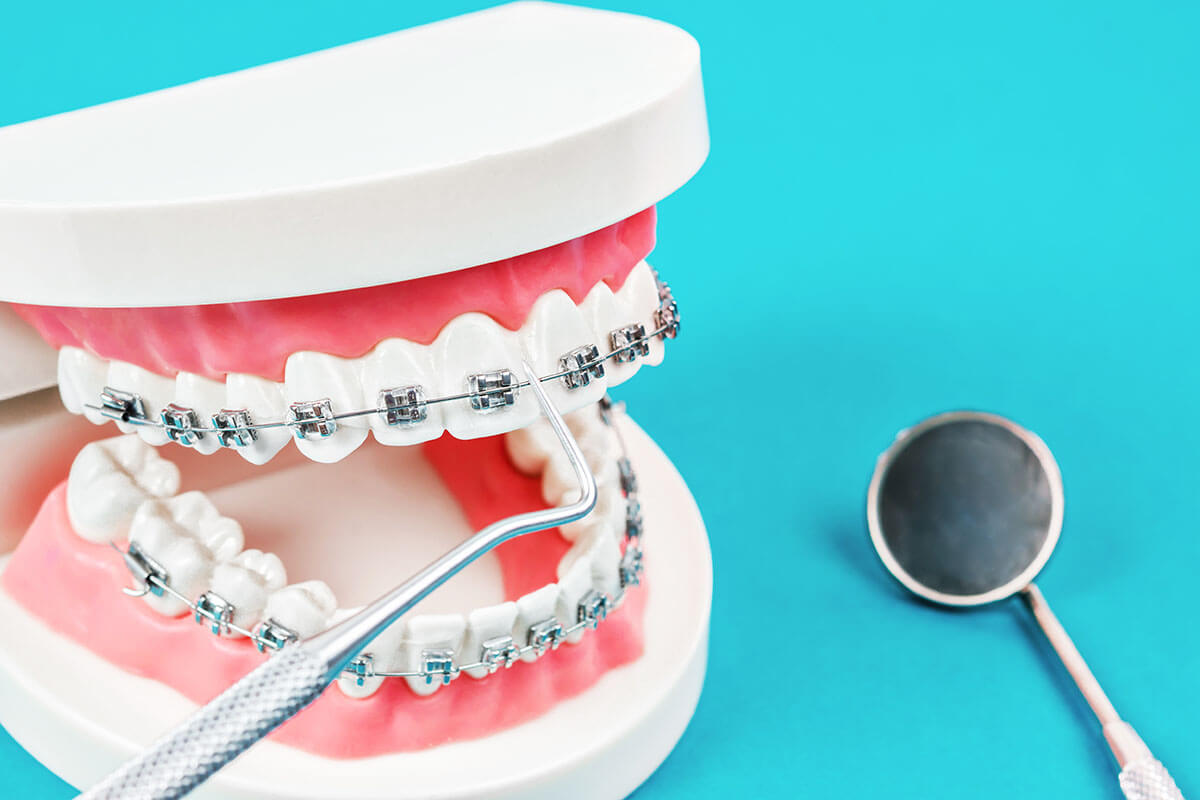What Establishes Cumming Braces and Aligners Apart from Various Other Orthodontic Treatments
Wiki Article
Comprehensive Overview to Orthodontics Treatments for Dealing With Oral Misalignments
In the world of orthodontics, the trip to accomplishing a completely lined up smile involves a myriad of procedures customized to correct dental misalignments. From conventional braces to invisible aligners and even medical options, the field of orthodontics supplies a series of remedies to resolve differing degrees of dental irregularities. Recognizing the intricacies of each procedure, including their systems, benefits, and prospective downsides, is critical in making informed decisions about one's orthodontic therapy. As we navigate with the thorough guide to orthodontic treatments for correcting dental misalignments, the elaborate details of each approach will unfold, losing light on the path towards a practical and unified oral placement.Orthodontic Procedures Overview

Routine adjustments and surveillance are important components of orthodontic treatment to make sure progress is on track and to make any kind of essential alterations along the method. By undertaking orthodontic procedures, patients can not only accomplish a straighter grin but also improve their total dental health and function.
Standard Braces: Just How They Work
When thinking about orthodontic treatments for oral misalignments, standard braces stand out as a reliable technique for correcting teeth placing. Conventional dental braces consist of brackets, cables, and bands that work with each other to apply continuous stress on the teeth, gradually relocating them right into the preferred alignment.
One secret aspect of just how standard braces work is the process of bone renovation. As pressure is used to the teeth with the dental braces, the bone surrounding the teeth is reshaped to sustain the new tooth settings. This remodeling is necessary for the long-term security of the corrected positioning. Patients will certainly require regular modifications at the orthodontist's office to make sure the dental braces proceed to apply the appropriate stress for effective teeth motion.
Unseen Aligners: Disadvantages and pros
These clear, tailor-made trays are basically unseen when worn, making them an appealing option for individuals looking for an extra aesthetically pleasing orthodontic treatment. Clients can eliminate the aligners prior to eating or brushing their teeth, reducing the risk of food getting stuck in the home appliance and simplifying the cleansing process.
Surgical Orthodontic Options
Surgical treatments in orthodontics existing viable choices for addressing intricate oral misalignments that might not be properly dealt with through traditional orthodontic treatments. While invisible aligners and traditional braces can deal with lots of orthodontic problems, particular instances require surgical intervention to accomplish ideal outcomes. Surgical orthodontic options are normally suggested for serious malocclusions, substantial jaw discrepancies, and situations where the underlying bone framework requires adjustment to accomplish proper alignment.One common surgical orthodontic treatment is orthognathic surgical procedure, which entails rearranging the jaws to fix practical issues such as difficulty recommended you read speaking or chewing. This surgery is often performed in cooperation with an orthodontist that assists line up the teeth before and after the procedure. Surgical orthodontics might additionally include treatments to reveal impacted teeth, remove excess gum cells, or improve the jawbone to develop a much more harmonious face profile.
Prior to considering medical orthodontic choices, clients undertake a comprehensive analysis to figure out the requirement and possible advantages of such interventions. braces. While surgical procedure might seem challenging, it can dramatically enhance both the function and aesthetics of the smile in instances where conventional orthodontic therapies fall short
Retainers and Post-Treatment Treatment

Failing to comply with post-treatment care instructions can result in relapse, where the teeth progressively relocate back towards their original settings. Regular retainer wear, excellent dental hygiene, and regular dental check-ups are essential for preserving the results achieved via orthodontic surgery and guaranteeing the long-term stability of the corrected dental alignment.
Conclusion
In conclusion, orthodontic treatments use different options for fixing oral imbalances. Surgical orthodontic options are readily available for a lot more severe imbalances. In general, orthodontic procedures can successfully improve oral health and wellness and aesthetic look.As we navigate via the extensive overview dental places around me to orthodontic procedures for correcting oral misalignments, the detailed information of each technique will certainly unfold, losing light on the path toward a unified and practical dental placement. - braces
One of the most usual orthodontic treatments is the usage of braces, which are composed of steel braces and cables that use gentle stress to gradually move teeth right into the preferred position.When taking into consideration orthodontic therapies for dental imbalances, traditional dental braces stand out as a time-tested technique for correcting teeth positioning. In addition, undetectable aligners may not be appropriate for intricate orthodontic issues that call for more significant teeth motion, as they are generally suggested for light to moderate cases. Retainers are tailor-made orthodontic tools designed to hold teeth in their remedied placements after the conclusion of orthodontic treatment.
Report this wiki page